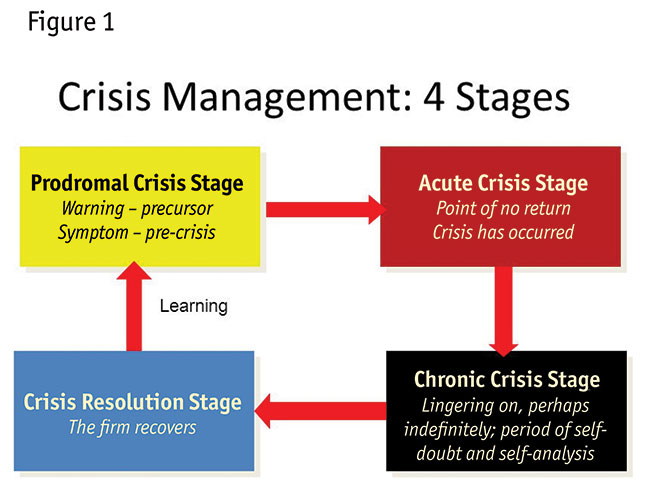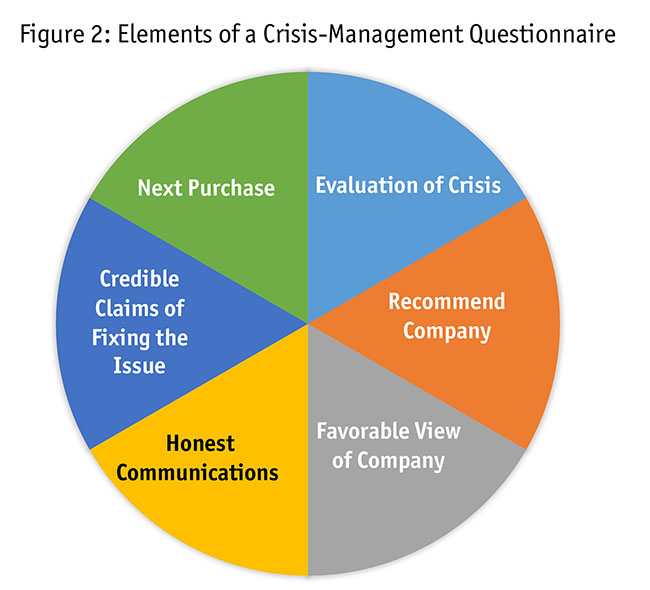Accelerating recovery
Editor's note: Rex Repass is president of Research America Inc. Michael Lieberman is founder and president of Multivariate Solutions, a statistical consulting firm.
Benjamin Franklin once said, “Glass, china and reputation are easily cracked and never well mended.” In a global economy, 24/7 news cycle and ubiquitous social media culture, reputations in the 21st century are just as fragile.
The corporations, brands and people that recover from fractured reputations are those that recognize the importance of transparency and getting in front of the narrative when a crisis occurs.
Every crisis is different, from Merck’s drug Vioxx, Toyota’s faulty gas pedal or Chipotle’s E. coli outbreaks to online data breaches and celebrity faux pas. Some crises that impact a reputation do not begin as evident brand bloopers or celebrity scandals. Examples include the Pepsi Kendall Jenner ad. Or when KFC ran out of chicken in the U.K. Or the February 2017 online post from Bradley Reid asking why his wife Nanette had been fired from the Cracker Barrel job she’d held for 11 years. (It wasn’t long before the hashtag #JusticeforBradsWife began trending.)
Many brands hit bumps and have public relations nightmares but quick, transparent and insightful crisis communication research can lead to a faster and more holistic recovery than trying to hide, defend or ignore the situation at hand. Effective crisis management requires a multi-tiered response. In this article, we will focus on the research aspect of a crisis management response, stopping short of media strategy and follow-up investigations.
Field a study immediately
A crisis breaks and the call comes from the client or the client’s legal counsel to a consulting firm and research team. The first thing to do is to field a study immediately, preferably before the crisis permeates the media. This study should establish top brand equities, what we like to call “brand love.”
Every brand has brand equities. The goal of this initial phase of research is to get a baseline of the client’s strongest brand equity – the one likely to survive the crisis – and the potential initial damage to that attribute. For example, Honda is known as a reliable company committed to high quality. Chipotle, before its brand crisis, was known for “food with integrity.”
This research should also include hypotheticals that may occur during the crisis. Ask respondents their perceptions and attitudes about the client’s brand and other brands in the category. Next, ask about the brand attributes and monitor to see which ones go up or down and which attributes help maintain brand strength. For example, if Honda had a crisis, its safety measure may go down but “committed to high quality” may retain its brand-lifting strength. This would be a key finding.
Ensuring the health, safety and morale of employees should not be forgotten. Conversations between employees are a powerful word-of-mouth crisis response tool and almost always make it into the media.
When the crisis unfolds, treat it like a political campaign. There must be a strategic plan and a rapid-response team in place. One person is in charge and the hard roles of what each player should be doing and what they should not be doing are developed and assigned. The lead crisis campaign manager must enforce these roles. Usually, the players include the following:
- C-suite, general counsel and/or outside legal counsel
- crisis communication counsel for strategy and message development
- pollster/opinion research, consumer insights lead
- strategic marketing/communications director
Once the team is in place, a second study is usually conducted to test messaging concepts and messengers. How are brand equities holding up? Who should deliver the message? It’s important to keep an eye on the public conversation through techniques such as social network analysis. What is the buzz on Twitter and other social media platforms?
Conduct a tracking survey so that the brand conversation becomes a narrative, not just a snapshot in time. As the crisis evolves and the corporate response begins, brand equities will either remain constant, decline or improve. Chipotle salvaged its “food with integrity” label. Toyota regained being dependable while retaining its innovative company image.
Unexpected issues will emerge requiring answers that may impact corporate reputation and the brand. Measurement of the brand, tracking and reputation studies will provide answers. Some of the more important deliverables include the following:
- brand perception
- consumer propensity measures
- developing an understanding of how bad the crisis could get
- measurement of the reach of the negative message to understand the real threat (different research methods)
The research should be a guide to the media strategy and the team needs to take stock of the situation across marketing, communications and digital conversations as well as the effect on brand preference and future sales. When and where are things changing? Retaining brand strength and constantly measuring the change in brand equity is important.
A well-known recent corporate crisis is the 2009-2011 Toyota vehicle recalls, which involved three separate but related recalls. Toyota initiated the recalls, the first two with the assistance of the U.S. National Highway Traffic Safety Administration (NHTSA), after reports that several vehicles experienced unintended acceleration.

Toyota, a company that built a world-class corporate brand reputation based on quality, manufacturing and design excellence, reliability and customer focus, obviously faced a major threat to its reputation. What was its response? It launched the Toyota Strategic Initiative to determine how the recalls had affected its image. The first step was to assess the recall issue among consumers regarding the company’s image, identity and reputation.
When an organization is facing a crisis, key factors that need to be considered are its audience, the type of crisis the organization is facing and the stage in the issue’s life cycle the crisis is in (Figure 1). With so much at risk, company leadership must choose the most appropriate response strategy to lessen the threat of the crisis.

Figure 2 shows the key elements of an effective crisis management corporate study. Within this frame, the company – such as Toyota – can evaluate its situation as the storm breaks and within subsequent waves.
When researching its crisis response, Toyota also considered key stakeholders. These included opinion elites, Toyota owners and the general public. Quite often multivariate analysis will uncover different drivers of key reputation elements, such as honesty of communications and ongoing positive brand equity relative to competitive automotive brands.
In its initial research after the recalls, as expected, Toyota’s safety and trust attributes declined. However, the company’s brand attributes related to innovation remained stable.
In the second study after a crisis, it’s important to test many messages and collect data over a finite time period. During this phase, Toyota began to see equities that remained favorable during the crisis including attributes related to dependability and reliability.
An analysis of Toyota’s senior leadership crisis response revealed the prevalence of two major themes, namely defense and future action. The first was for the NHTSA to provide context as to why the company was slow in taking corrective action.
The theme of future action focused on the company’s history of innovation and quality engineering, with a sub-theme of a commitment to improvement in customer service, quality and safety.
Understand and measure
As illustrated in the Toyota example, companies that recover from a crisis are those that thoroughly understand the underlying facts that caused the crisis, systematically measure the effects on consumer opinion and manage their reputation through timely, forthright communications with the public, customers, other stakeholder groups and the media.
As for Benjamin Franklin, he understood the importance of reputation and the resources required to mend those that are broken. Research-based consumer insights combined with strategic communications are effective tools for repairing, protecting and enhancing corporate and brand reputations.
